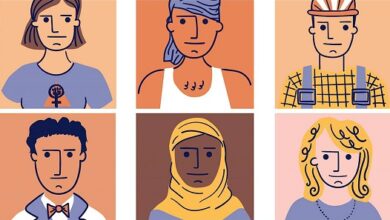Bronchi and lungs Similarities Differences and FAQs
Bronchi and Lungs
In this article we will provide you the information about the Bronchi and lungs Similarities Differences and FAQs.
What does bronchi mean?
The bronchi are a vital part of the respiratory system. These long, thin tubes extend from the trachea to the lungs, allowing air to enter the lungs during inhalation and leave them during exhalation. The bronchi are covered by smooth muscle layers, which allows them to contract to regulate the flow of air in and out of the lungs. In addition, they also contain striated muscles and mucous membranes that filter foreign particles such as dust or allergen before being transported to the alveoli. The thickness varies from 2-4 mm in the primary bronchioles to 10-15 mm in the largest terminal branches. The main function of the bronchi is to facilitate efficient gas exchange between the body and its surrounding environment.
What does lungs mean?
The lungs are the most important organs of the respiratory system. They are located within the rib cage and are made up of lung tissue, which is a network of alveoli connected to the airways. The lungs have the main human language. The objective of exchanging gases between blood and external air, allowing the necessary nutrients to reach all the cells of the body to maintain their functioning correctly. In addition, they also help in the elimination of carbon dioxide as a residual product of cellular metabolism.
Similarities between bronchi and lungs
The bronchi and lungsThey are related organs in the respiratory system. Both contribute to the inhalation, storage and exhalation of air during breathing. The bronchi lie directly below the trachea, with two main branches (right and left) leading to the lungs. These tubular structures help transport air from the throat to the smaller airways within each of the lungs. On the other hand, the lungs allow the exchange of carbon dioxide and oxygen between the body and the environment; They also house numerous sacs called alveoli where this gas exchange takes place. In summary,
Differences between bronchi and lungs
The lungs are organs of the human body that are located in the thorax. They are directly involved in the respiration processes, absorbing oxygen and releasing carbon dioxide. The bronchi , on the other hand, are tubular structures located within the lungs. Its function is to transport air from the trachea to the alveoli, thus allowing the exchange of gases between ambient air and blood. They also help filter larger particles such as dust or other contaminants present in the air before passing it into the body.
Frequent questions about Bronchi and lungs
What are the bronchi and their function?
The bronchi are the flexible, muscular tubes that connect the trachea to the lungs. Its main function is to transport air from the trachea to the alveoli, where gas exchange occurs between the respiratory system and the circulation. In addition, they also perform functions such as keeping the airways open to allow a constant flow of air, producing cilia to eliminate germs from the upper respiratory tract, and producing mucus to lubricate the walls of the bronchi.
How do I know if I have bad bronchial tubes?
It is important to consult with a doctor to determine if there are any problems related to the bronchi. Your doctor may recommend laboratory and x-ray tests or perform physical tests to help diagnose the health of your bronchial tubes. Symptoms such as shortness of breath, persistent cough, wheezing, fatigue, and a constant feeling of tiredness may also indicate the presence of a bronchial problem.
Why are the bronchi clogged?
The bronchi are plugged to prevent irritation and damage to the respiratory system. This helps reduce symptoms of lung diseases, such as chronic bronchitis or emphysema. The body produces mucus to help clog the passages, which can lead to frequent coughing and sneezing. If an infection is present, the mucus may also contain fluid with bacteria or other pathogens. The mucosa of the bronchi also becomes inflamed when there is chronic inflammation. This reduces airflow and makes it difficult to breathe normally.
What happens when your bronchi close?
When the bronchi close, air cannot enter or leave the lungs. This causes difficulty breathing, coughing and wheezing. If the air obstruction is severe, other symptoms such as fatigue, dizziness, and shortness of breath may also occur. Treatment for this condition depends on the underlying cause and usually includes medications to help open the bronchi and steroid inhalers to reduce inflammation.
What are the symptoms of lung problems?
Common symptoms of lung problems include coughing up phlegm, difficulty breathing, chest pain, shortness of breath, or abnormal tiredness. Other symptoms may include recurrent upper respiratory tract infections (colds), wheezing when inhaling and exhaling air, a harsh sound when breathing, and episodes of chronic bronchitis.
What are the lungs and their parts?
The lungs are respiratory organs found in the thorax. They are made up of two parts: the right and left lungs. The right side is larger and divided into three lobes, while the left side has two lobes. The main functions of the lungs are to absorb oxygen from inhaled air, remove carbon dioxide from exhaled air, and regulate blood pressure to maintain a balance between the amount of oxygen and carbon dioxide in the body.
What are the diseases that affect the lungs?
Diseases that affect the lungs include: asthma, chronic bronchitis, COPD (Chronic Obstructive Pulmonary Disease), pneumonia, cystic fibrosis, tuberculosis and lung cancer.
Which lung is more important?
Both lungs are equally important for the proper functioning of the body. However, if one lung is damaged or does not function properly, the other can compensate for the lost function.



